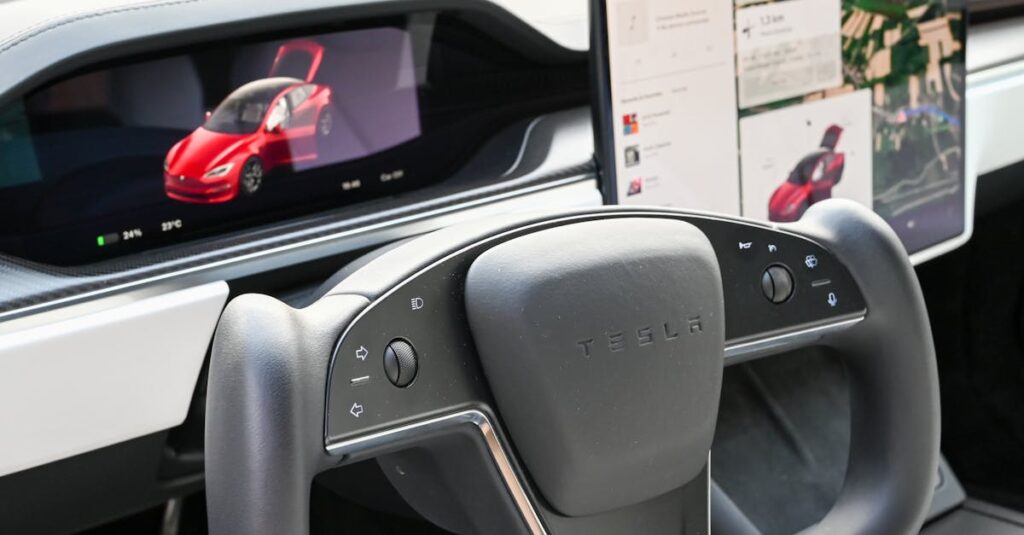In today’s fast-paced business landscape, the fusion of technology and lean principles is revolutionizing operational efficiency. Hi-tech lean combines cutting-edge innovations with traditional lean methodologies to streamline processes and eliminate waste. This approach not only enhances productivity but also fosters a culture of continuous improvement. Companies embracing hi-tech lean are leveraging tools like IoT, AI, and data analytics to optimize workflows and make informed decisions. By integrating these technologies, organizations can respond swiftly to market demands while maintaining high-quality standards. As industries evolve, understanding the impact of hi-tech lean becomes essential for staying competitive and driving sustainable growth.
Hi-Tech Lean
Hi-tech lean merges advanced technologies with traditional lean principles to create an efficient operational framework. This method significantly enhances productivity through the integration of tools such as the Internet of Things (IoT), artificial intelligence (AI), and data analytics. By streamlining processes, companies eliminate waste and improve resource utilization.
Hi-tech lean facilitates data-driven decision-making. Organizations can analyze real-time data, identify inefficiencies, and implement corrective measures swiftly, ensuring responsiveness to market changes. With continuous feedback loops, businesses promote a culture centered on ongoing improvement.
Adopting hi-tech lean practices allows companies to maintain high-quality standards amid rapid industry changes. Organizations gain a competitive edge by optimizing workflows and fostering agile operations. Understanding hi-tech lean is crucial for achieving sustainable growth in today’s dynamic business landscape.
Key Principles of Hi-Tech Lean
Hi-tech lean combines innovative technologies with traditional lean principles, creating a framework that drives efficiency and productivity. This section outlines the core components of this methodology.
Lean Methodology
Lean methodology focuses on maximizing value while minimizing waste. Key components include:
- Value Stream Mapping: Identifying all steps in a process to eliminate non-value-added activities, thus enhancing efficiency.
- Continuous Improvement: Implementing the Kaizen philosophy, which encourages ongoing incremental improvements in processes.
- Just-in-Time Production: Aligning production schedules with customer demand to reduce inventory costs and minimize waste.
- Employee Empowerment: Engaging employees in decision-making processes fosters a culture of responsibility and encourages innovative solutions.
Technology Integration
Integrating advanced technologies elevates lean practices. Important aspects include:
- Internet of Things (IoT): Utilizing connected devices to collect real-time data, enabling instant monitoring and decision-making.
- Artificial Intelligence (AI): Leveraging AI for predictive analytics, which identifies trends and potential areas for improvement before issues arise.
- Data Analytics: Employing advanced analytics tools to assess operational performance, pinpoint inefficiencies, and streamline processes.
- Automation: Implementing robotic process automation to handle repetitive tasks, freeing human resources for higher-value activities.
These principles of hi-tech lean create a responsive, agile operational framework that enhances both productivity and quality in today’s fast-paced business environment.
Benefits of Hi-Tech Lean
Hi-tech lean principles offer significant advantages that transform operational capabilities. These benefits manifest through increased efficiency, cost reduction, and enhanced competitiveness.
Increased Efficiency
Increased efficiency characterizes the hi-tech lean approach as it streamlines processes and improves workflow. Automation tools handle repetitive tasks, allowing employees to focus on higher-value activities. Data analytics provide real-time insights that help identify bottlenecks, facilitating quicker decision-making. Value stream mapping reveals wasteful steps in operations, enabling organizations to restructure processes for better performance. As a result, companies experience shorter cycle times and improved output quality.
Cost Reduction
Cost reduction emerges as a key benefit of hi-tech lean practices. By minimizing waste through techniques like just-in-time production, organizations lower inventory costs and reduce overhead expenses. Advanced analytics identify cost drivers, enabling targeted strategies for expense management. The integration of IoT into supply chain management optimizes resource allocation and inventory tracking, which leads to lower carrying costs. These practices collectively contribute to maximizing profitability while maintaining high standards of quality.
Implementation Strategies for Hi-Tech Lean
Implementing hi-tech lean requires systematic approaches that integrate technology and traditional lean principles effectively. These strategies facilitate the transition to a more agile and efficient operational framework.
Step-by-Step Process
- Assessment of Current Operations: Organizations assess existing processes to identify inefficiencies and areas for improvement. This evaluation forms the basis for implementing hi-tech lean principles.
- Define Objectives: Setting clear performance objectives aligns the team with the goals of optimization, waste reduction, and efficiency enhancement. Specific metrics enable measurement of success.
- Map Value Streams: Utilizing value stream mapping identifies critical processes and areas with waste. This visual tool supports streamlined workflows and focuses on value-added activities.
- Select Appropriate Technologies: Choosing technologies such as IoT sensors, AI analytics, and automation tools enhances data collection and process efficiency. Implementing suitable technology reduces delays and improves decision-making.
- Pilot Testing: Running pilot programs enables testing of hi-tech lean strategies on a smaller scale. Organizations gather feedback to refine processes before full-scale implementation.
- Training and Empowerment: Providing training equips employees with the knowledge to utilize new technologies effectively. Empowering staff fosters a culture of continuous improvement and innovation.
- Implement Changes: Deploying the refined strategies across the organization requires clear communication and collaboration among teams. Ensuring stakeholder buy-in promotes smoother transitions.
- Monitor and Adapt: Continuous monitoring of performance metrics allows organizations to adapt strategies as needed. Regular feedback loops ensure that operations remain aligned with set objectives.
- Resistance to Change: Employees may resist new methodologies or technologies due to uncertainty or fear. Addressing concerns through clear communication and training can alleviate fears.
- Integration Issues: Merging hi-tech solutions with existing systems can lead to technical difficulties. Ensuring compatibility and providing adequate support mitigates these challenges.
- Insufficient Training: Lack of proper training on new technologies can hinder productivity. Comprehensive training programs ensure employees can effectively use advanced tools.
- Data Overload: Organizations may struggle to process vast amounts of data generated by technology. Implementing data management practices helps focus on actionable insights.
- Initial Costs: High upfront costs for technology investments may deter adoption. Highlighting long-term benefits and cost savings can justify these initial expenditures.
- Cultural Barriers: A traditional corporate culture may conflict with the agile nature of hi-tech lean. Fostering an environment that encourages experimentation and learning promotes successful implementation.
Case Studies of Hi-Tech Lean in Action
Several companies exemplify the successful implementation of hi-tech lean principles, showcasing the transformative outcomes achieved through technological integration and lean methodologies.
Automotive Industry: Toyota
Toyota employs hi-tech lean with its Toyota Production System (TPS). It integrates IoT to monitor manufacturing processes in real-time. By utilizing data analytics, Toyota identifies inefficiencies within its production lines. The implementation of predictive analytics helps forecast demand, streamlining inventory management. Continuous improvement practices enable Toyota to maintain high-quality standards while reducing cycle times and costs. The result is a more agile production process that meets market demands efficiently.
Electronics Sector: Siemens
Siemens leverages hi-tech lean principles in its manufacturing plants, incorporating AI and automation. These technologies enhance predictive maintenance, reducing equipment downtime. Siemens applies value stream mapping to identify waste and optimize workflows. The combination of real-time data collection and automation allows Siemens to adapt swiftly to changes in customer demands, ensuring timely delivery of high-quality products. This approach has improved overall efficiency and minimized production costs.
Healthcare: Virginia Mason Medical Center
Virginia Mason Medical Center implements hi-tech lean to improve patient care and operational efficiency. By utilizing data analytics, the facility identifies bottlenecks in patient flow. Value stream mapping assists in streamlining processes, decreasing wait times, and optimizing resource allocation. The integration of IoT devices supports real-time monitoring of patients, allowing for timely interventions. Virginia Mason’s commitment to continuous improvement has resulted in enhanced patient satisfaction and reduced operational costs.
Retail: Walmart
Walmart utilizes hi-tech lean to optimize its supply chain management. The company employs advanced data analytics to manage inventory effectively, ensuring products are available when customers demand them. IoT sensors track inventory levels in real time, minimizing stock-outs and surplus. Walmart’s continuous improvement initiatives focus on reducing waste in logistics and storing, directly impacting profitability and customer experience. This systematic approach has positioned Walmart as a leader in retail efficiency.
Food Production: Nestlé
Nestlé integrates hi-tech lean by using automation and advanced analytics in its production facilities. The company employs IoT sensors to monitor equipment performance and track production metrics. This data helps Nestlé identify inefficiencies and implement corrective actions. Lean principles, combined with technology, enable the company to reduce waste and enhance product quality. The outcome is an efficient manufacturing process that supports sustainable practices while meeting consumer demands.
These case studies illustrate how diverse industries effectively apply hi-tech lean principles to enhance operational efficiency, reduce costs, and improve product quality. Each organization’s unique adaptations demonstrate the flexibility and effectiveness of merging advanced technologies with traditional lean methodologies.
Embracing hi-tech lean principles equips businesses to thrive in a competitive landscape. By merging advanced technologies with traditional lean methodologies, organizations can significantly enhance productivity and operational efficiency. This approach fosters a culture of continuous improvement and empowers employees to make data-driven decisions.
The successful implementation of hi-tech lean not only reduces waste and costs but also promotes agility in responding to market demands. As demonstrated by various industry leaders, the integration of IoT, AI, and data analytics can lead to transformative results. Companies that adopt this framework are better positioned for sustainable growth and long-term success.



